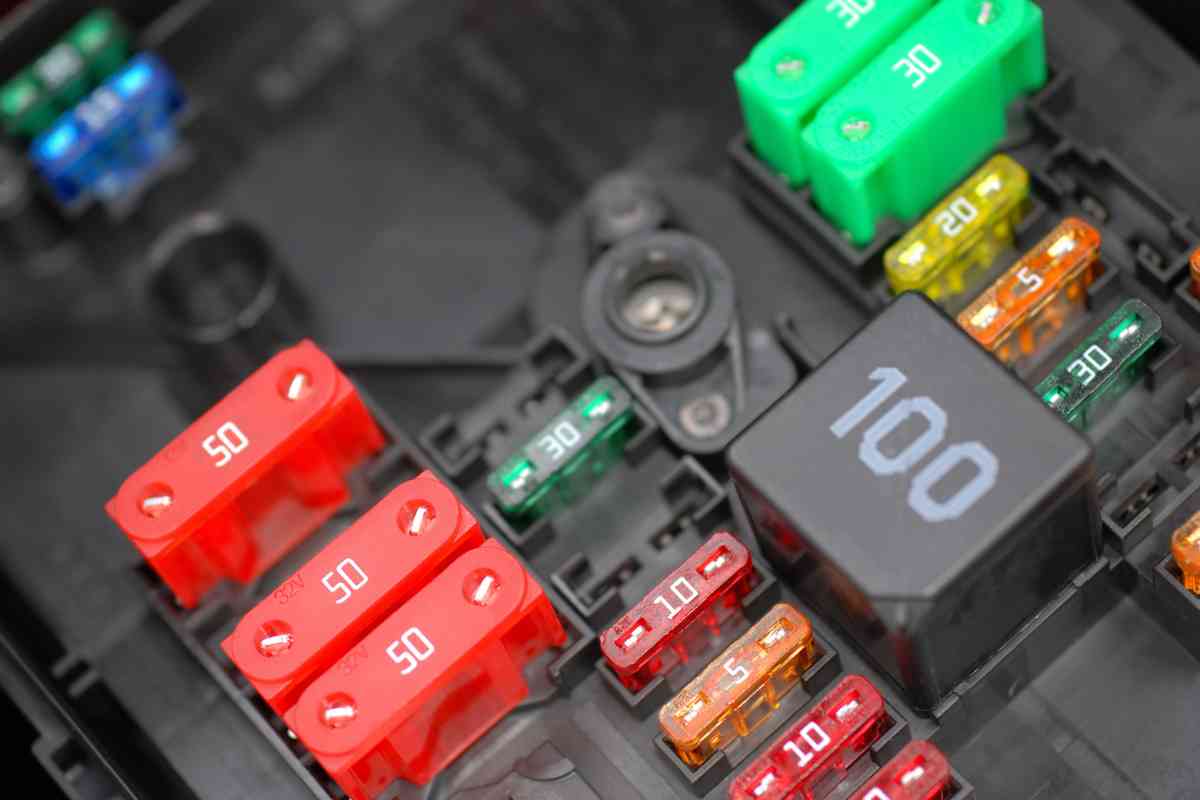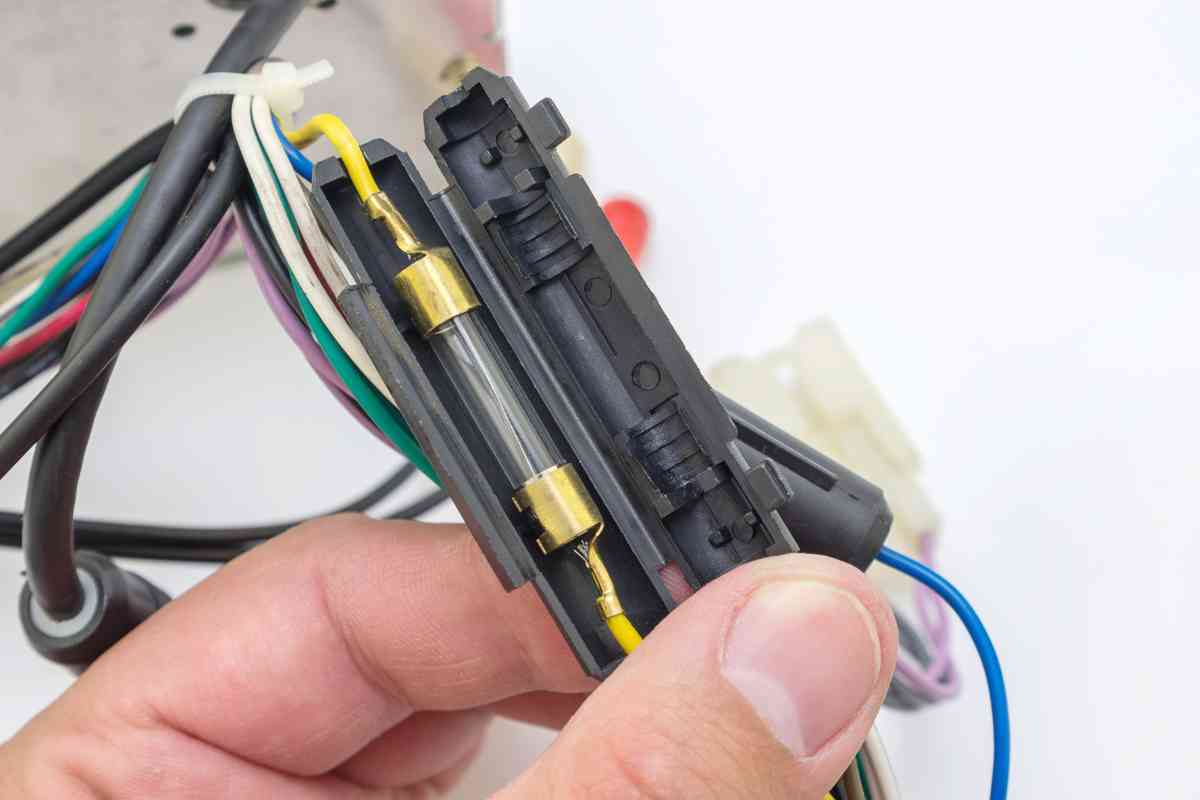Replacing a car radio fuse is a relatively simple task that can save you from unnecessary trips to the mechanic and costly repairs.
When your car radio stops working or exhibits power issues, a blown fuse is often the culprit.
And if you don’t know how to replace a car radio fuse, it’s not a difficult process. It is just like changing a home fuse.
If you need more clarification about anything car fuse, read on as we take you through a straightforward process of replacing a car radio fuse step by step, ensuring you can confidently tackle this task independently.
How To Check If the Car Radio Fuse Is Blown?

Determining if your car radio fuse is blown is a straightforward process. If your car radio fails to power on, it is highly probable that the Fuse has blown and needs to be replaced.
However, suppose your radio sporadically turns on and off or exhibits erratic behavior. In that case, it is likely due to a faulty connection or wiring in the circuit rather than a blown fuse.
By inspecting the Fuse, you can determine if the wire inside has melted, indicating a blown fuse.
A fuse will melt when a sudden increase in current within the circuit occurs. It serves as an indicator that there is an issue within your vehicle’s electrical system.
This issue can arise from a short circuit caused by contact between positive and negative wires or the power wire coming into contact with the ground.
There are several ways to check the Fuse to see its truly bad:
1. Using a Car Fuse Tester
You can use a car fuse tester to determine the condition of a fuse quickly. These testers typically consist of probe pins that, when touched to the Fuse, illuminate an LED light if the Fuse is intact. If the Fuse is damaged, the LED light will not turn on.
2. Electrical Tests
Using a multimeter provides the most accurate way to check for blown fuses. You can measure the voltage between the fuse terminal and the ground without removing the Fuse from the fuse block with the ignition.
When you set the multimeter to 12 volts or auto range, connect the negative lead to a grounding point while touching the positive lead to each side of the Fuse.
If the Fuse is functional, the multimeter will display a reading of 12 or 13.5V on both sides. In the case of a blown fuse, one side will show the expected voltage, and the other will display 0V, indicating a broken fuse element.
Another way to do an electrical test is by measuring the voltage drop. It measures the voltage drop between the fuse terminals without removing the Fuse from the block.
Start the car engine, open the fuse box, and use the two leads of the multimeter to check the voltage drop across the fuse terminals.
If the multimeter reads 0 volts, no voltage drop indicates a good fuse. A reading of 12 volts indicates a blown fuse with a voltage drop across the terminals.
You can also do a continuity test. You must perform this test with the engine off on a removed fuse. Set the multimeter to the continuity or resistance mode and touch the leads to each fuse terminal.
0 ohms or a beep reading confirms that the Fuse’s filament is intact and functional. If the multimeter displays “OL Ω” or “∞ Ω,” it indicates an open circuit, implying a blown fuse.
3. Visual Inspection
You can visually inspect the Fuse without a multimeter or fuse tester. Remove it from the fuse holder and examine it against a light source.
Look for a thin wire connecting one blade to another, indicating that the Fuse is intact. Alternatively, it is likely blown if you notice a black color or signs of burning around the Fuse.
However, this method is less accurate, especially for non-transparent or dusty fuses, and minor wire breakages may go unnoticed.
How To Replace Car Radio Fuse?
Changing a Fuse in your car is similar to replacing one at home. Here’s a step-by-step guide to replace a car radio Fuse:
Step 1: Find the Fuse Panel
Locate the fuse panel in your car. You can consult your owner’s manual if needed, but the fuse panel is typically under the steering wheel.
Remove the cover of the fuse panel. You can use the diagram on the reverse side of the cover to see the components powered by each Fuse in your car.
Step 2: Remove the Blown Fuse
Identify the blown Fuse. It may appear black or have a broken metal filament. Using a flashlight can expedite this step if the area is dimly lit.
Carefully extract the blown Fuse. You can use various tools or even your hands, but exercise caution as fuses are fragile. Removing a broken fuse is more challenging than taking out an intact one.
Step 3: Get a Replacement
You can take the blown Fuse to either an electronics store or a car parts store and find a suitable replacement fuse with the same amperage also the blown Fuse.
Refer to the fuse panel and your owner’s manual for the appropriate rating. Using a fuse with an incorrect amperage can lead to serious electrical issues.
Step 4: Insert The New Fuse
Insert the new Fuse into the vacant slot in the fuse box, ensuring it aligns in the same direction as the other fuses. It should fit securely.
Cover the fuse box cover in place and turn on the car’s ignition and test the radio. If the blown Fuse caused the issue, the radio should now function properly.
If the same Fuse blows again shortly after replacement or fails to work, it may be necessary to visit a mechanic for further inspection.
Related Questions
How Much Would I Use To Replace a Car Radio Fuse
The cost of repairing a car radio fuse differs depending on whether you do it yourself or take it to a professional.
If you choose to replace the Fuse yourself, a car fuse can range from $5 to $20 at regular automotive stores. Or you can even get a cheaper version on Amazon or hardware stores.
If you opt to have a mechanic replace the Fuse, the cost can be high, sometimes reaching hundreds of dollars.
Some repair shops may overcharge you and claim additional problems with your vehicle or radio. It’s often better to replace the radio fuse yourself to save money.
However, for professional installations or when upgrading your car stereo, it’s recommended to consult an electrician, especially if a higher-rated fuse is required for your new car stereo.
Where Can I Find the Fuse for My Car Radio?
The Fuse for your car radio is typically not located directly on the stereo. Instead, it is usually housed in the car’s fuse panel.
To locate the fuse panel, you must check either the driver’s side dashboard or underneath the dashboard. The fuse panel may also be in the engine compartment under the hood in some cars.
Once you have located the fuse panel, refer to your vehicle’s manual or a diagram on the block to identify the specific Fuse for the car radio.
The fuse map, which can usually be found on the fuse panel cover, provides information about the purpose of each Fuse and its amperage rating. This will help you identify the correct Fuse for your car radio.
How Can I Remove a Car Radio Fuse For Inspection?
There are several ways to remove a car radio fuse for inspection, depending on the available tools and the Fuse’s location:
1. Fingers
If the Fuse is easily accessible and not tightly packed, you may be able to remove it with your fingers. Endeavor to turn off the car and disconnect the battery to prevent electric shocks or short circuits.
2. Fuse Puller
The best way to remove a car radio fuse is to use a fuse puller. It is a small plastic device explicitly designed to safely remove fuses. Insert the fuse puller around the Fuse and gently pull it out without causing any damage.
3. Pliers
You can use pliers if a fuse puller is unavailable. However, exercise caution to avoid damaging the Fuse or its surroundings. Opt for thin needle-nose pliers or jewelry pliers for better precision and control.
Which is the Best Fuse To Buy For Car Radio
To determine the appropriate Fuse for your car radio, it is advisable to refer to the radio installation manual for the recommended fuse rating.
In most cases, blade fuses are commonly used for car audio systems. For low-power car radios, a 20 amp blade fuse is typically sufficient.
However, if your car radio is more powerful, it may require a higher ampere rating ranging from 25 to 30 amps.
It is crucial to avoid using a fuse with a higher amperage than recommended, as this can potentially harm your car’s components.
Conclusion
Now you understand how to replace a car radio fuse and know its a straightforward procedure that can be done by most car owners with essential tools and knowledge.
With the steps highlighted in this guide, you can confidently locate, remove, and replace a blown fuse in your car radio.
This simple DIY fix can save you time and money and provide a sense of empowerment and self-reliance.
Always consult your vehicle’s manual or fuse diagram for specific information about the fuse location and amperage rating.
Related:

